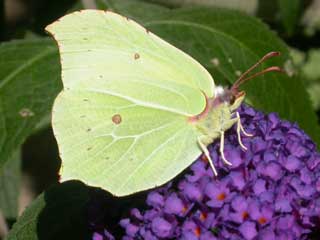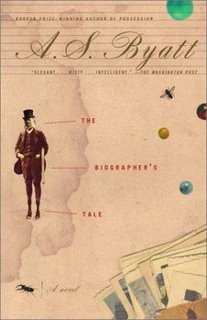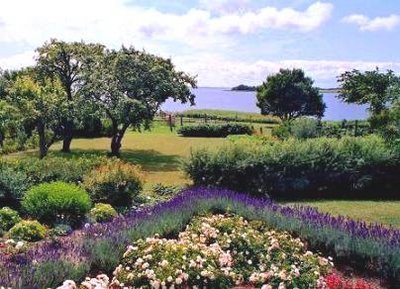KAYAKING THE NIGHT AWAY
 Returned home in the most beautiful weather last night. Past the old smokehouse, I caught the last glimpse of the sun on a fiery backdrop of yellow and gold beaming out from behind the hills of Longbrook. The Wolf sound was smooth as a millpond. Its glassy reflection of the trees and reed woods under the dark-blue sky made up intriguing sceneries below the surface. Gliding through these viscid images, the water moved like mercury, giving off a soft tinkling as from strings of tiny bells when the paddle’s blade slid through the subterranean landscapes.
Returned home in the most beautiful weather last night. Past the old smokehouse, I caught the last glimpse of the sun on a fiery backdrop of yellow and gold beaming out from behind the hills of Longbrook. The Wolf sound was smooth as a millpond. Its glassy reflection of the trees and reed woods under the dark-blue sky made up intriguing sceneries below the surface. Gliding through these viscid images, the water moved like mercury, giving off a soft tinkling as from strings of tiny bells when the paddle’s blade slid through the subterranean landscapes.
A couple of big white swans set off from a cove when I reached the landing of Calvesgarden, their wings slapping the water as they crossed to the other side of the strait obviously most annoyed with my presence. Some ducks seemed to back the opinion. They flew up, complaining vehemently all the way to Peter’s Shipyard. Some nocturnal commotion. I put down the paddle to see what else would stir up things, but nothing did.
The hot weather all through the week made me adopt the Mediterranean practice of lying low in the early afternoon. Instead, I’ve sailed in the morning and evening, enjoying the sight of the day breaking in a sea of rose water and the slow waning of the light when the night falls like a feather in the hours before midnight. One night, I stayed out longer than usual to see the moon set over the sound. As it went down, it turned into a glowing fireball before melting into a crimson haze.
Kayaking is the ideal way of getting around in the shallow waters between the islands. You can go anywhere, pull in for a rest wherever you like and you’re always in sight of land, making it easy to find your way.
- - - - - - - - - - - - - - - - - - - - - - - - - - - - - - - - - - -
SPIRAEA, LAVENDERS AND ROSES
.jpg)
Today, the temperature has already reached 27 C (81 F) around ten and the light is getting hard and white. There’s a Grecian look to the whitewashed walls of the house in the fierce sun and to the calm Wolf an almost Aegean expression. Some tall, bony, old man with small, round sunglasses—a stranger in these parts, I think—is crossing the sun-scorched drying ground in his sleeveless, grey undershirt and a pair of baggy shorts hanging casually from his wide black suspenders. He reminds me of the retired American architect who hired out good reading for the hot siestas in his dime-library in San Fernando, Formentera. Not a soul was out in the midday sun as I remember it. Being into Beckett then, I recognised that “The sun shone, having no alternative, on the nothing new” (Murphy, 1938) and stayed in as the locals. It’s a fine opening line, I still think, but it doesn’t apply to the situation in Calvesgarden.

Here, the rose bed has produced a wealth of new shoots and flowers. The yellow ‘Tivoli’ roses have become as big as lettuce heads. You may count them on your fingers as opposed to the roses on the ‘Brilliant Cover’ and the ‘Schneewittchen’ bushes where you’d need an abacus just to make a rough estimate. For a moment, looking at the big, meaty yellow roses, I contemplated cooking them, but I’m uncertain of how to go about it and the library is lacking a good Chinese cookbook. They would be the ones eating them, I think. The heavy fragrance of the roses blends beautifully with the fine scent of the surrounding lavender hedge. I follow the advice of an old Spanish woman, I once knew, who had a huge rose garden. Manure is all right if you like, she said, but watering is much more important. With the right sandy soil, full sun all day and plenty of water, you can easily do without it.
Both the wild and the sweet cherries are beginning to blush along with the rowanberries. As I don’t cover the trees in nets, the blackbirds are already feasting on them long before they’re ripe. The utter lack of placidity to the temper of those feathered barbarians communicates itself whenever they have a cherry in the beak. They rustle the thing as if they were fighting another customer over it instead of quietly enjoying the treat, littering the lawn in the process with the sticky remains of their loot.
.jpg)
- - - - - - - - - - - - - - - - - - - - - - - - - - - - - - - - - - -
THE KEEPING OF CHERRY TREES
I discussed the keeping of cherry trees with a Czech student whose family have a big orchard in his home country. Birds aren’t as stupid as you’d think, he said. You simply shoot a couple of the little thieves and then the rest will stay away. He offered the advice with the most innocent expression on his face as if it was the most natural thing to do. I couldn’t help smiling, thinking of what my neighbours would say if I popped a few of the little buggers. They might even make a nice mincemeat cherry pie but I also don’t have a Corsican cookbook.
It’s time for lunch, I think, with the way ideas for exotic dishes keep coming up when I should be writing about the state of the garden. Despite the month-long draught and the intense heat, it looks fine after two rounds of thorough watering a fortnight apart. Even the new queen bush, the emperor bush and the star top are blooming profusely in their first season, adding much white and rose to the eastern boundary.
.jpg)

52+KB.jpg)
KB+51.jpg)




 Fields of goldenrod in full bloom are prominent features of the landscape around Calvesgarden in September and October. Waving gracefully also along the roadsides, they indicate the end of summer. I use them liberally to enliven the boundaries of the garden in autumn. As the other perennials that are native to the area, they present no difficulties in growing and virtually take care of themselves. Being rich in nectar, they attract more varieties of insects than most other flowers, and they give the honeybees – the most frequent visitors – their last chance at a good winter feed.
Fields of goldenrod in full bloom are prominent features of the landscape around Calvesgarden in September and October. Waving gracefully also along the roadsides, they indicate the end of summer. I use them liberally to enliven the boundaries of the garden in autumn. As the other perennials that are native to the area, they present no difficulties in growing and virtually take care of themselves. Being rich in nectar, they attract more varieties of insects than most other flowers, and they give the honeybees – the most frequent visitors – their last chance at a good winter feed.


.jpg)

.jpg)
.jpg)
.jpg)
.jpg)


 I like the sound of church bells in the morning. You can hear them loud and clear in any wind direction because our church stands on a hill overlooking the Wolf sound only a few hundred metres down the coast. Its nave and choir was built in Romanesque style around 1250 and the church tower was erected in the Gothic period, around 1400. The tower has two huge bells, one made in 1477 and the other in 1618. They sound old, too. Rather unhurried at first because of the wear along the edges, I suppose, but soon boomingly alive as if the metal had dressed to the vibrations over time, defying even the hardest winds and rains. I don’t so much like to hear them in the afternoon. Not because of the beautiful sound, but because of its connotations. The sound of them in the evening brings consolation. It’s as if they were saying: We’re still here after all this time.
I like the sound of church bells in the morning. You can hear them loud and clear in any wind direction because our church stands on a hill overlooking the Wolf sound only a few hundred metres down the coast. Its nave and choir was built in Romanesque style around 1250 and the church tower was erected in the Gothic period, around 1400. The tower has two huge bells, one made in 1477 and the other in 1618. They sound old, too. Rather unhurried at first because of the wear along the edges, I suppose, but soon boomingly alive as if the metal had dressed to the vibrations over time, defying even the hardest winds and rains. I don’t so much like to hear them in the afternoon. Not because of the beautiful sound, but because of its connotations. The sound of them in the evening brings consolation. It’s as if they were saying: We’re still here after all this time.

.jpg)
 It finally happened. Last night, we had a lovely drizzle after another unyieldingly hot day with temperatures moving into the mid-thirties (mid-nineties) in the afternoon. Usually, I can smell rain a mile away, but this came quite unexpectedly. I was moving a few buckets of water around in the garden when it suddenly started. Very lightly at first, but then almost like a shower. It sounded as if rice was being poured. I turned my face upwards, savouring the feeling of nice, cool rain. Afterwards, the air was full of sweet and spicy fragrances of flowers and wet soil.
It finally happened. Last night, we had a lovely drizzle after another unyieldingly hot day with temperatures moving into the mid-thirties (mid-nineties) in the afternoon. Usually, I can smell rain a mile away, but this came quite unexpectedly. I was moving a few buckets of water around in the garden when it suddenly started. Very lightly at first, but then almost like a shower. It sounded as if rice was being poured. I turned my face upwards, savouring the feeling of nice, cool rain. Afterwards, the air was full of sweet and spicy fragrances of flowers and wet soil.

 The long period of warm, sunny days seems to have suspended the growth of the garden in a moment of summer bliss. In the last few days, a light, dry breeze has been coming from the north, cooling things down in the evening between the hot flushes. If there’s any fury to the colour purple, it’s in the blooming rows of lavenders around the rose bed on which scores of yellow brimstone butterflies are dancing all day. The radiant bed of reel cress flowers has bright specs of yellow summer flowers popping up through the cover of reds and oranges, and long stems of purple flowers droop from the top of the buddleia next to the reddening spiraea hedge. Of the shrubs blooming simultaneously, theirs is the most beautiful match, I think. It’s easy to keep the garden when it’s being fried every day. I collect so little garden refuse that it’s hardly enough to feed a rabbit with a healthy appetite.
The long period of warm, sunny days seems to have suspended the growth of the garden in a moment of summer bliss. In the last few days, a light, dry breeze has been coming from the north, cooling things down in the evening between the hot flushes. If there’s any fury to the colour purple, it’s in the blooming rows of lavenders around the rose bed on which scores of yellow brimstone butterflies are dancing all day. The radiant bed of reel cress flowers has bright specs of yellow summer flowers popping up through the cover of reds and oranges, and long stems of purple flowers droop from the top of the buddleia next to the reddening spiraea hedge. Of the shrubs blooming simultaneously, theirs is the most beautiful match, I think. It’s easy to keep the garden when it’s being fried every day. I collect so little garden refuse that it’s hardly enough to feed a rabbit with a healthy appetite.
 Returned home in the most beautiful weather last night. Past the old smokehouse, I caught the last glimpse of the sun on a fiery backdrop of yellow and gold beaming out from behind the hills of Longbrook. The Wolf sound was smooth as a millpond. Its glassy reflection of the trees and reed woods under the dark-blue sky made up intriguing sceneries below the surface. Gliding through these viscid images, the water moved like mercury, giving off a soft tinkling as from strings of tiny bells when the paddle’s blade slid through the subterranean landscapes.
Returned home in the most beautiful weather last night. Past the old smokehouse, I caught the last glimpse of the sun on a fiery backdrop of yellow and gold beaming out from behind the hills of Longbrook. The Wolf sound was smooth as a millpond. Its glassy reflection of the trees and reed woods under the dark-blue sky made up intriguing sceneries below the surface. Gliding through these viscid images, the water moved like mercury, giving off a soft tinkling as from strings of tiny bells when the paddle’s blade slid through the subterranean landscapes..jpg)

.jpg)
.jpg)
